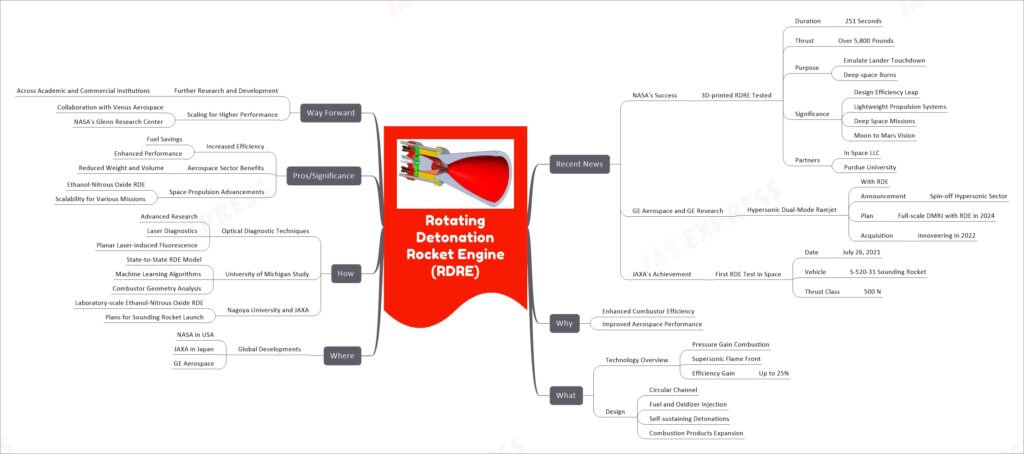Rotating Detonation Rocket Engine (RDRE)

The Rotating Detonation Rocket Engine (RDRE) represents a significant advancement in rocket propulsion technology. It utilizes pressure gain combustion, where detonations continuously travel around an annular channel, achieving supersonic flame front expansion. This method is theoretically more efficient than traditional deflagrative combustion, potentially offering up to 25% efficiency gains. In 2023, NASA successfully tested a novel, 3D-printed RDRE, producing over 5,800 pounds of thrust, demonstrating the potential for lightweight propulsion systems for deep space missions. GE Aerospace and GE Research have also shown interest in RDE technology, planning to demonstrate a full-scale hypersonic dual-mode ramjet with RDE in 2024. Furthermore, JAXA achieved a milestone by testing an RDE in space for the first time. This ongoing research and development across various institutions aim to enhance combustor efficiency and performance, significantly benefiting the aerospace sector.
If you like this post, please share your feedback in the comments section below so that we will upload more posts like this.

